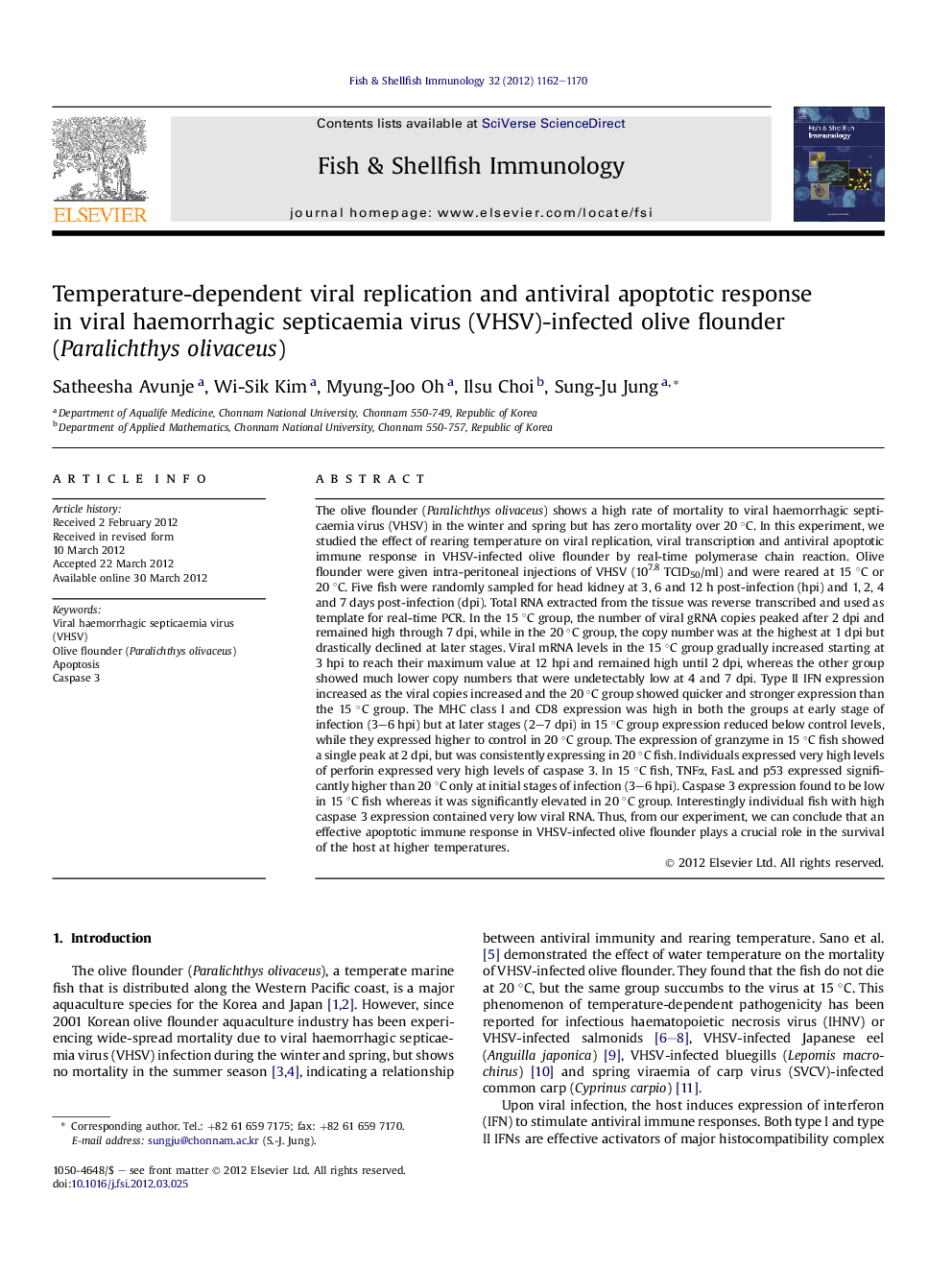| Article ID | Journal | Published Year | Pages | File Type |
|---|---|---|---|---|
| 2431693 | Fish & Shellfish Immunology | 2012 | 9 Pages |
The olive flounder (Paralichthys olivaceus) shows a high rate of mortality to viral haemorrhagic septicaemia virus (VHSV) in the winter and spring but has zero mortality over 20 °C. In this experiment, we studied the effect of rearing temperature on viral replication, viral transcription and antiviral apoptotic immune response in VHSV-infected olive flounder by real-time polymerase chain reaction. Olive flounder were given intra-peritoneal injections of VHSV (107.8 TCID50/ml) and were reared at 15 °C or 20 °C. Five fish were randomly sampled for head kidney at 3, 6 and 12 h post-infection (hpi) and 1, 2, 4 and 7 days post-infection (dpi). Total RNA extracted from the tissue was reverse transcribed and used as template for real-time PCR. In the 15 °C group, the number of viral gRNA copies peaked after 2 dpi and remained high through 7 dpi, while in the 20 °C group, the copy number was at the highest at 1 dpi but drastically declined at later stages. Viral mRNA levels in the 15 °C group gradually increased starting at 3 hpi to reach their maximum value at 12 hpi and remained high until 2 dpi, whereas the other group showed much lower copy numbers that were undetectably low at 4 and 7 dpi. Type II IFN expression increased as the viral copies increased and the 20 °C group showed quicker and stronger expression than the 15 °C group. The MHC class I and CD8 expression was high in both the groups at early stage of infection (3–6 hpi) but at later stages (2–7 dpi) in 15 °C group expression reduced below control levels, while they expressed higher to control in 20 °C group. The expression of granzyme in 15 °C fish showed a single peak at 2 dpi, but was consistently expressing in 20 °C fish. Individuals expressed very high levels of perforin expressed very high levels of caspase 3. In 15 °C fish, TNFα, FasL and p53 expressed significantly higher than 20 °C only at initial stages of infection (3–6 hpi). Caspase 3 expression found to be low in 15 °C fish whereas it was significantly elevated in 20 °C group. Interestingly individual fish with high caspase 3 expression contained very low viral RNA. Thus, from our experiment, we can conclude that an effective apoptotic immune response in VHSV-infected olive flounder plays a crucial role in the survival of the host at higher temperatures.
► VHSV replication and transcription was initially slower at 15 °C than at 20 °C. ► Apoptotic genes expressed high in both the 15 °C and 20 °C group with some time gaps. ► Caspase 3 expressed higher at 20 °C than at 15 °C. ► The individuals with high caspase 3 expression contained very low viral mRNA.
